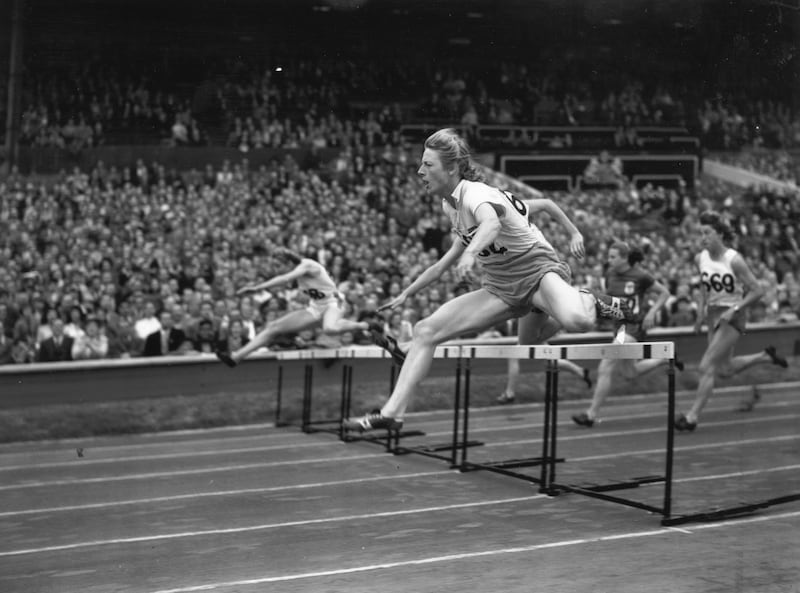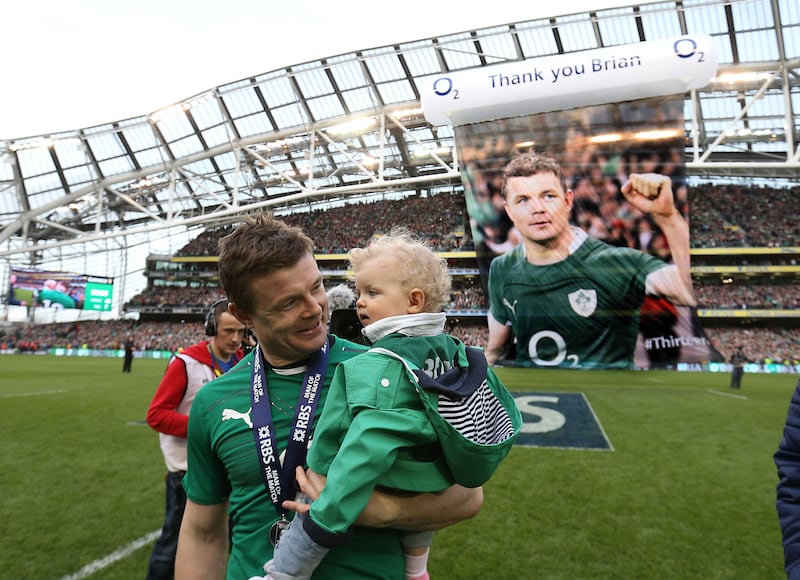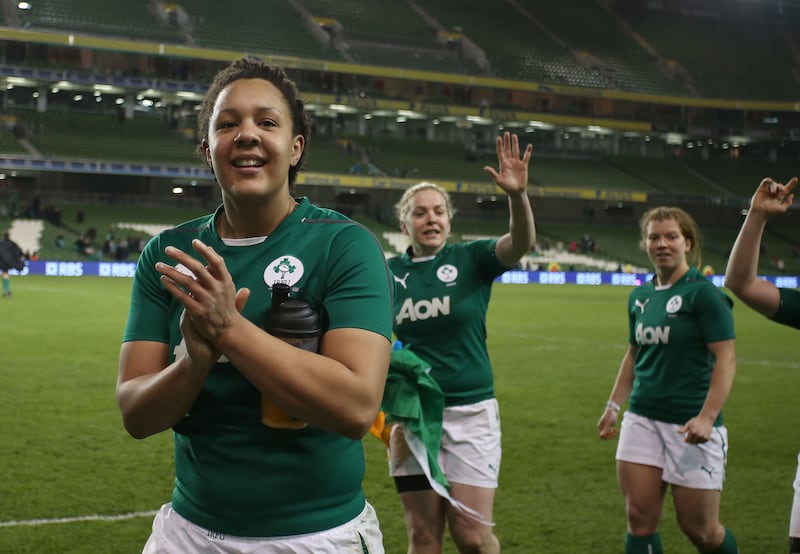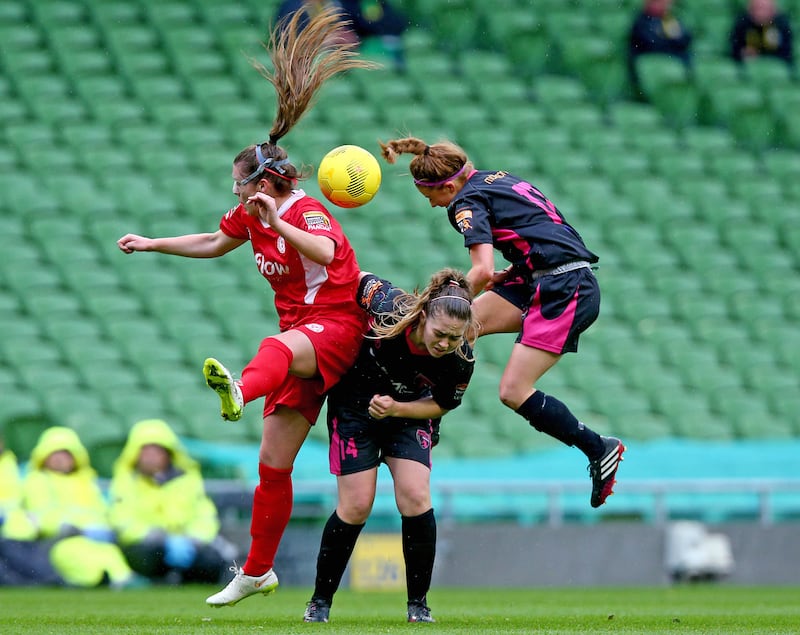Finally, after 151 years, Fanny Blankers-Koen will have some Irish women for company in the Aviva stadium press room. The Dutch sprinter is the only female celebrated in a picture gallery that charts historic sporting moments at Lansdowne Road since 1872.
Besides the poorly organised women’s rugby international against Italy in March 2014, next to no female activity has previously happened at the Dublin 4 venue.
No disrespect to Taylor Swift, as The Eras Tour will pack the joint next June, but this article focuses on sporting achievement by women inside the shiny horseshoe overlooking the River Dodder.
We won’t keep you long.
‘So, when I say I am in, I am in’ - Carla Ward reaffirms Ireland commitment
Marmoush scores screamer as Manchester City climb to third with win over Bournemouth
Ange Postecoglou adamant work at Spurs is not done but sounds resigned to his fate
Europa League final: Spurs and Manchester United’s struggles leave game meaning nothing and everything
Blankers-Koen was highlighted by the Aviva simply because, until today, she was only female main event on the land Henry Wallace Doveton Dunlop procured via a 69-year lease to ensure track and field had a venue near the city in the 1870s.
A fortnight after the Dutch sprinter captured four golds at the 1948 Olympics in the 100m, 200m, 4x100m and 80m hurdles, she entertained 35,000 spectators by equalling her 100m world record of 10.8 seconds on Lansdowne’s “heavy grass track”.

“A delight to watch,” wrote Paul McWeeney in The Irish Times. “Tall and slimly built, she has the long, controlled stride of a first-class male runner, yet she is more graceful than any man I have seen on the track.”
The backhanded compliment was all women’s sport could expect 75 years ago. As Ger Siggins and Malachy Clerkin noted in their 2010 history of the Stadium, Lansdowne Road, there was heavy criticism from the authoritarian Catholic archbishop of Dublin, John Charles McQuaid, who believed that the sight of female limbs would corrupt the minds of educated Irish men. McQuaid, the former president of Blackrock College, believed that “mixed athletics and all cognate immodesties are abuses that right-minded people reprobate, wherever and whenever they exist.”
Besides the Ireland women’s Lacrosse team hosting two internationals in 1935 and 1949, an international women’s event was excluded from the venue until March 8th, 2014.
To most people that was the day Brian O’Driscoll won his last Ireland cap in Dublin. To a small number of women’s rugby supporters – mainly parents and friends – it is the day they were blocked entry to the stadium until 20 minutes into the historic first, and last, rugby international on the main stage.
The giant-sized O’Driscoll poster that was floated onto the field after the men’s game and other formalities around his farewell ensured that Fiona Coughlan’s team were forced to warm-up on the back pitch and change in the Lansdowne clubhouse. Their planned four-minute walk to the Aviva pitch was slowed by thousands of supporters.

“The players were in good humour the whole way through the weekend but I think it hit them when we walked out of the changing room and there were thousands of people,” said Ireland coach Philip Doyle in 2014. “We had to walk through this little channel and it just hit us like a brick wall . . . Hopefully in years to come when they do it a few times they will get used to that.”
Ireland won 39-0 before reaching a World Cup semi-final later that year by defeating defending champions New Zealand in the group stages. It was supposed to be the best of times. Grand slammers in 2013 and, similar to the Katie McCabe-led football team in 2023, easily the best rugby side Ireland has ever produced.
But, in general, the history makers did not feel welcome. Certainly not enough to be offered a standalone fixture or another evening on the undercard, after the men.
“Our supporters felt lost there,” one player remembered.
“It was nuts,” said another, “some of my mates were there for the men’s game and never realised the women’s was after so they left.”
“It was a complete nightmare,” said a third person involved with the team. “There was no chance of us playing another game there, on our side, as that game caused a load of shit as the crowd entering for the women’s game were denied entry to the Aviva until 20 minutes after kick off.”

The attendance is expected to be a lot better this weekend when the Republic of Ireland take on Northern Ireland in the Uefa Nations League.
“[Future women’s matches in the Aviva] is a call for the FAI and the IRFU but this match is heading towards 38,000,” said stadium director Martin Murphy. “From the get go, we planned for women’s events as well as men’s – there are design features in the changing rooms. There are women involved in the [male] rugby teams. We have had physios and doctors, so there are women in those roles.
“We did plan for the future. There are women referees now, so we had rooms put in for them in 2008.”
The women’s FAI Cup final was played in the stadium in 2004, 2005, and from 2013 to 2019, but being on the undercard to the men saw them run into the same issues that the Ireland rugby team faced in 2014.
“When the crowd started coming in, they were coming for the men, not to support us, some of them mightn’t even have known we were playing,” said former Cork City striker Saoirse Noonan this week. “I don’t think there’ll be a crowd coming in towards the end of Saturday’s game. When we look around and see them, we’ll know they all bought tickets to watch the women’s team. It’s a statement. We owe it to everyone to put on a good performance.”
Since 2020, Tallaght stadium has been the logical venue for the women’s cup final.

After 2014 the IRFU sent their senior women back to Ashbourne RFC, where the locals always took care of everyone. They later upgraded their digs to Donnybrook and currently Musgrave Park in Cork.
The Irish Times asked if the FAI have a similar plan in place. Turns out the association will turn a profit from the first ever Nations League fixture, against neighbours Northern Ireland, and the hope is for at least one women’s international at the Aviva every year going forward.
In 2018, The Irish Times revealed that it costs €300,000 to hire the Aviva stadium, with Gerry Thornley reporting that a Leinster versus Munster full house generated a €400,000 profit for both Leinster and the IRFU. Murphy previously revealed that it costs €5 million annually to keep the venue “ticking over.”
The financial engine of Irish football and rugby is full houses at the Aviva stadium – when it comes to rugby, 60 per cent of ticket revenue for international games comes from hospitality, with €3 million-plus in gate receipts per game.
“There was plans to have a women’s international [at the stadium] before the World Cup but it wasn’t possible because we were doing work on the pitch,” said Murphy. “Now on the back of the World Cup we have over 30,000 coming, which is fantastic.”
Any future plans for women’s football? “It depends, there are attractive games that it would make sense to put them in the stadium, and we want as many events as we can get. I know the IRFU plan to have the All-Ireland league final in the stadium next April.”
Interim Ireland soccer manager Eileen Gleeson concurred. “We have to respond to growth and the needs of the game, so I think that will happen naturally.”
For now at least though, it looks like Taylor Swift will be the next woman to pack the shiny venue on the River Dodder.
















